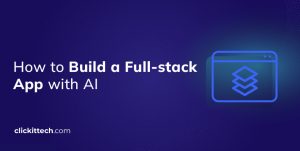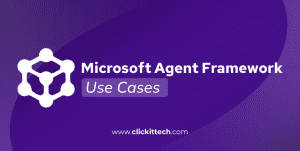At the beginning of the year, most people (including me) could see that we were on the verge of an AI explosion. The growing competition and new releases were tell-tale signs. That prediction is quickly becoming a reality. In a recent article, I compared DeepSeek vs. OpenAI, and today, I’ll explain the differences between Perplexity Deep Research vs OpenAI Deep Research.
Like most AI tools, the main differences between OpenAI Deep Research vs Perplexity Deep Research boil down to speed, cost, accuracy, and ideal use cases.
Perplexity is fast, especially for a deep research tool. It wraps up research in about three minutes, while OpenAI takes between 7 and 20 minutes.
In tests and user examples, Perplexity sometimes hallucinates or provides inaccurate answers. OpenAI is also not entirely accurate, but is vastly more reliable for now.
Regarding cost, Perplexity has a free tier, while OpenAI Deep Research was initially only offered under a $200 per month plan; now ChatGPT Plus users get 10 Deep Research queries per month (and free users get 2). Perplexity’s paid version, the Pro, only costs $20/month.
So, which one should you use? I’ll answer that question and more in this article.
- Perplexity Deep Research Overview
- OpenAI Deep Research Overview
- Which One is Better: OpenAI Deep Research vs Perplexity Deep Research?
- FAQs about OpenAI Deep Research vs Perplexity Deep Research
Perplexity Deep Research Overview
Perplexity Deep Research is a relatively new entrant, launched on February 14, 2025, just two weeks after OpenAI’s release. What makes this new tool different from the Auto version? Perplexity AI’s CEO, Aravind Srinivas, described it as a tool designed to provide “expert-level research on any topic.”
According to Perplexity, its Deep Research tool can tackle subjects across finance, marketing, health, travel planning, and more. So, I tested Perplexity’s Auto and Deep Research models on a finance topic using the same query for both models.
My Prompt: Analyze the impact of interest rate hikes on the U.S. stock market in 2024, including sector-wise effects and expert predictions. Use the most recent stats and also include comments from industry experts.
Here are the results of both responses side by side:
My Results:
- Auto mode referenced 8 sources and produced a 300-word summary—a decent overview but fairly surface-level.
- Deep Research mode referenced 30+ sources and generated a detailed 1,000-word analysis covering sector-wise effects, data trends, and expert insights.
One of my favorite features is how it inserts citations directly after each sentence or phrase. This makes it so much easier to cross-check sources and spot inaccuracies, a major plus when conducting data-heavy research. Recently, Perplexity also added a “Check Sources” feature, which lets you highlight any text in an answer to instantly verify it against the cited sources.
Are you looking to build cutting-edge AI development services? ClickIT has you covered!
Features and Capabilities of Perplexity Deep Research
Perplexity Deep Research uses a proprietary framework called Test Time Compute (TTC) expansion, which enables a systematic and dynamic exploration of complex topics. Unlike traditional search engines that serve up static results, Perplexity’s architecture mirrors human cognitive processes—it iteratively refines its understanding through multiple analysis cycles.
How Does Perplexity Deep Research Work?
The system starts by breaking down the query into subcomponents. Then, it autonomously runs dozens of web searches, evaluates hundreds of sources, and synthesizes findings using probabilistic reasoning models.
One of the things I find impressive is its parallelized data ingestion and hierarchical summarization techniques. These allow it to generate reports in two to four minutes. Sure, that’s longer than a quick chatbot response, but it’s still remarkably fast when I think about how long I’d spend researching the same topic, clicking through pages, cross-referencing studies, and double-checking sources. Moreover, I don’t expect deep research tools to be as fast as chatbots, at least not for now. Maybe in the future.
Perplexity Deep Research can resolve contradictions in information, detect emerging trends, and prioritize authoritative sources. This level of sophistication is reflected in its 21.1% score on “Humanity’s Last Exam,” a benchmark designed to test AI’s ability to tackle complex, high-stakes reasoning problems.
Another thing I appreciate is Perplexity AI’s commitment to accessibility. It operates on a freemium model, where non-subscribers can run up to 5 Deep Research queries per day, while Pro users ($20/month) get effectively unlimited access (up to 500 per day). This is such a great way to democratize access to Deep Research tools.
The tool is was initially available on the web only, but iOS, Android, and Mac app versions rolled out shortly after launch.
What are the Strengths and Limitations of Perplexity Deep Research?
Strengths
- Faster response time – Generates reports in about three minutes.
- Proprietary reasoning framework – Uses Test Time Compute (TTC) expansion, which enhances its ability to break down complex queries and refine its understanding iteratively.
- Free access for limited queries (up to 5 per day on free tier)
- Strong at synthesizing information across multiple sources
Limitations
- Prone to minor hallucinations and inaccuracies – While generally reliable, early reports suggest that it sometimes misinterprets data or generates subtle inaccuracies, which may be hidden in a lengthy report.
- Reports require human verification – Like most AI tools, I wouldn’t take its findings at face value just yet. Fact-checking and cross-referencing are still necessary, especially for high-stakes topics.
- No longer web-only – Initially, Perplexity Deep Research was only available on the web, but the Mac, Android, and iOS versions have since launched.
OpenAI Deep Research Overview
OpenAI’s Deep Research is positioned as an advanced AI agent designed to conduct autonomous research, synthesize knowledge, and generate in-depth reports. It runs on a customized version of OpenAI’s o3 model, optimized for web browsing, data analysis, and multi-step reasoning. So, basically, it’s built to think through complex research topics rather than just retrieve information.
It officially launched on February 2, 2025, and as of February 12, 2025, it’s available to all Pro users across web, iOS, Android, macOS, and Windows. Since then, OpenAI has extended Deep Research to ChatGPT Plus users (10 uses/month) and even introduced 2 monthly free uses, broadening its availability beyond the $200 Pro plan.
Features and Capabilities of OpenAI Deep Research
- Query Interpretation – It understands complex questions and, if needed, asks clarifying follow-ups to refine its approach.
- Web Scraping & Data Extraction – It searches the web, extracts relevant data, and organizes it for deeper analysis.
- Analysis & Synthesis – The AI identifies patterns, evaluates sources, and generates structured insights instead of summarizing content.
- Report Generation – It produces detailed, well-cited reports, often including charts, tables, and images to illustrate findings.
- Connectors to private data – OpenAI introduced beta “connectors” that allow Deep Research to analyze private content like your GitHub repositories and SharePoint/OneDrive files (currently for Plus, Pro, and Team users).
One of the standout stats I noticed is that OpenAI Deep Research scored 26.6% on “Humanity’s Last Exam,” which puts it ahead of Perplexity’s 21.1%—suggesting a stronger ability to reason through complex questions.
Elevate your business with LATAM AI Experts. Book a free call
What are the Strengths and Limitations of OpenAI Deep Research?
Strengths
- More in-depth research – I’ve seen that OpenAI’s model tends to dive deeper into topics and deliver more precise insights. Depending on the query, the reports sometimes include charts, tables, and citations, making them far more usable for those in professional or academic work.
- Multi-Step Query Handling – Can handle multi-step problems with better logic and structure.
- Accurate numerical data – Particularly useful when dealing with structured fields like finance, economics, and science.
- Transparency – One of my favorite aspects is that it outlines its reasoning step by step, which makes it easier to follow and verify its conclusions.
- Cross-platform compatibility: Currently, OpenAI’s deep research is available to all Pro users across web, iOS, Android, macOS, and Windows.
Limitations
- Slower response time – Some reports take 10 to 30 minutes, which can feel like an eternity compared to Perplexity’s faster turnaround.
- Inconsistent information – While OpenAI Deep Research is generally strong, it’s not immune to contradictions, occasional biases, or outdated references. As always, I strongly advise cross-checking your work.
- High cost – At $200 per month (!!), with only 100 queries, it’s not exactly affordable for most casual users. However, one user on Twitter thinks it’s worth $1000/month! In response, Sam Altman tweeted: “I think we are going to initially offer 10 uses per month for chatgpt plus and 2 per month in the free tier, with the intent to scale these up over time.”
Check out this OpenAi and Perplexity comparison on their Humanity’s Last Exam benchmark via Perplexity’s website:
Which One is Better: OpenAI Deep Research vs Perplexity Deep Research?
The best choice between Perplexity Deep Research vs OpenAI Deep Research depends on:
- For quick, everyday research – Perplexity is faster and budget-friendly. Perplexity is a solid choice if you’re looking for a Google alternative that actually synthesizes information.
- For professional, high-stakes research – OpenAI Deep Research dives deeper, analyzes more thoroughly, and is generally more accurate. It could be worth the investment if you need well-cited, structured reports for technical and academic work or working with complex, niche topics.
I wouldn’t recommend relying on either tool for legal reports. But that’s just my take: these fields require absolute accuracy, and no AI research tool, no matter how advanced, can fully guarantee that yet.
Our AI expertise transforms ideas into robust AI-driven solutions. Hire our AI Engineers
FAQs about Perplexity Deep Research vs OpenAI Deep Research
Perplexity is faster, more affordable, and accessible, while OpenAI is more accurate, detailed, and expensive. OpenAI scored 26.6% on “Humanity’s Last Exam”, outperforming Perplexity’s 21.1%, making it better for high-stakes research. However, Perplexity’s inline citations and speed make it a great alternative to Google searches and manual research.
Yes, Perplexity follows a freemium model. You get free queries (5 Deep Research queries per day), but unlimited access costs $20/month.
OpenAI Deep Research costs $200/month, with a limit of 100 queries per month.
There are a few alternatives to these two deep research tools, including Google’s Deep Research, Hugging Face’s open-source deep research tool, and Open Deep Research, which already has over 13K stars on GitHub.






